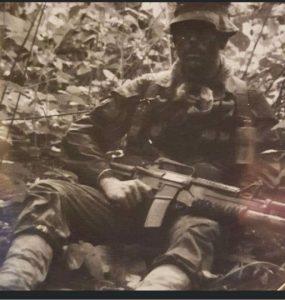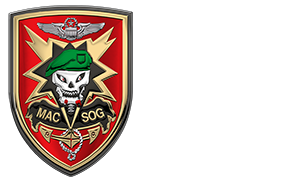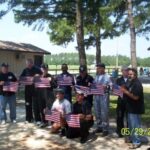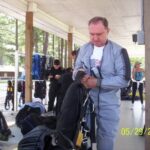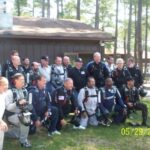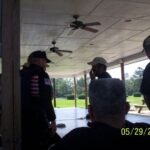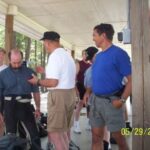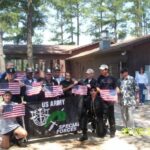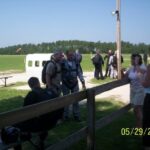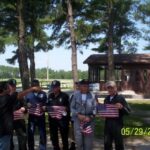Halo Jumps
Into the late 1960’s and early 1970’s, MACV-SOG’s infiltration into Laos, Cambodia and North Vietnam became a major problem. Time and time again, Recon Teams were being shot out of landing zones (LZ) and or had contact shortly after insert. Many LZ’s had North Vietnamese Army (NVA) LZ watchers. Later it was learned, that a Vietnamese double agent had infiltrated SOG’S ranks and supplied intelligence information to the NVA of planned missions.
Chief SOG Colonel “Skip Sadler” believed that High Altitude Low Opening (HALO) was an undetectable means of infiltration. Recon volunteers who had HALO experience was drawn from Command and Control North (CCN) and Command and Control Central (CCC). These men and many indigenous troops were flown to Okinawa for HALO training led by SFC Joe Markham and Ben Dennis. After a Month on Okinawa, the SOG Teams returned to Camp Long Thanh for additional training which was assisted MSGT Frank Norbury

Cliff Newman and Melvin Hill
First HALO JUMP
On, 28 November 1970 at approximately 0200 hours. The ramp of the C-130 began to drop. The sound of wind and engines howling in the dark Laotian night. Six men of Recon Team Florida, Team leader, or One- Zero Staff Sergeant Cliff Newman, Sergeant First Class Sammy Hernandez, and Sergeant First Class Melvin Hill made up three of the six. The others were two Montagnards and a South Vietnamese Army officer. Unable to see their drop zone, SFC Been Dennis had to rely on the Doppler radars system. “Go!” came the command. With that, they stepped off and plunged into the darkness. RT Florida’s target was a new NVA road just inside Laos in an area occupied as many as 10’000 NVA Troops.
Staff Sergeant Cliff Newman, Sergeant First Class Sammy Hernandez, and Sergeant First Class Melvin Hill made history, first Combat HALO Jump. Receiving Bronze Stars
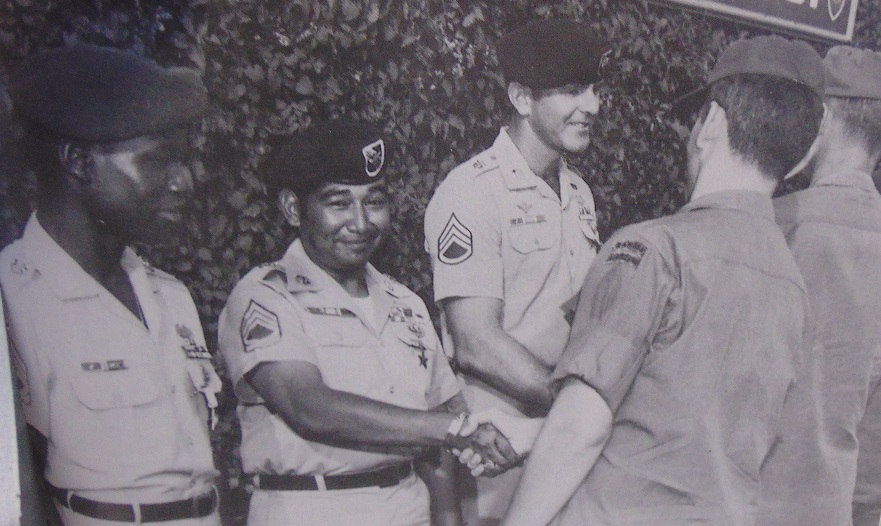
Pulling their rip cords at 1500 feet, the speed of rain slowed and they glided silently among gusting currents until they reached what they assumed was the drop zone. Some managed to hit and roll on the ground, while others snagged in trees. Unbuckling their harnesses, they immediately activated homing devices and tried to locate each other, but were too far apart. Miles in some cases. They decided to carry on and form into four elements. Hernandez and Hill were by themselves and would act independently, Newman located a Montagnard and so did the South Vietnamese officer. As the rain kept pelting them, they started on their way through the jungle toward an area they would search for the telephone line. All were uninjured, but they came down nearly six miles from their intended drop zone.
RT Florida reconned the area for five days and were extracted without incident. SOG concluded that HALO had been a proven and effective means of infiltration into Laos with out being detected.
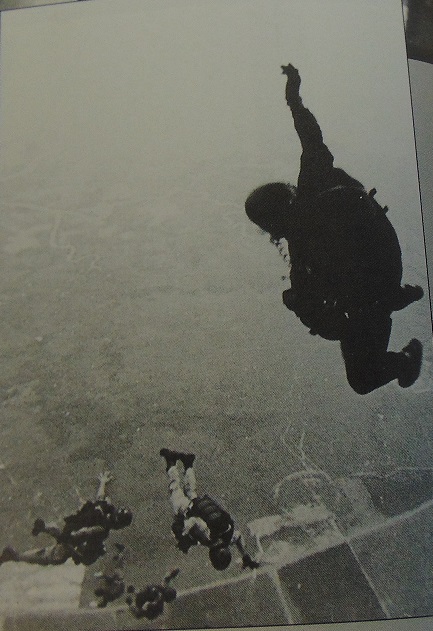
The Second Halo Team led by Captain Larry Manes, a respected recon veteran along with Spec6 Noel Gast, SSGT Robert Castillo and SGT John “Spider” Trantanella. An all American Team. In the early hours of May 7, 1971, the team jumped midway between the Ashau Valley and Khe Sanh near Highway 921. Because of sudden atmospheric pressure change, a toe popper mine in Gast rucksack armed itself. When Gast landed the toe popper mine went off and seriously injured Gast’s back. John Trananella had a bad landing both men had to be extracted. Manes and Castillo continued mission and reconned the area for five days without enemy contact.
Larry T. Manes
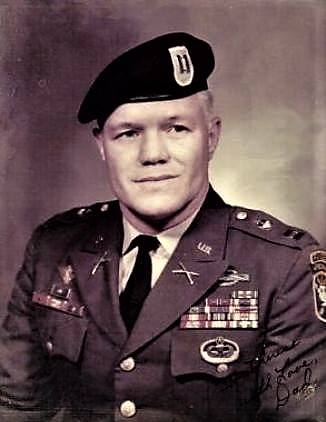
SOG’s third HALO mission was led by recon legend Sgt. Maj. Billy Waugh. SSGT James “JD” Bath, SGT Jesse Cambell and SGT Madson Strohlein made up the rest of the team. After training in Okinawa and at Long Thanh (SVN) the team was ready. On June 22, 1971, the team jumped from a SOG Blackbird at 19,000 feet. The night in Laos was dark and raining heavy. Most of the team were scattered except Waugh and Campbell. Both Bath and Strohlein hit the ground hard causing injuries. Stohlein braking his right arm.
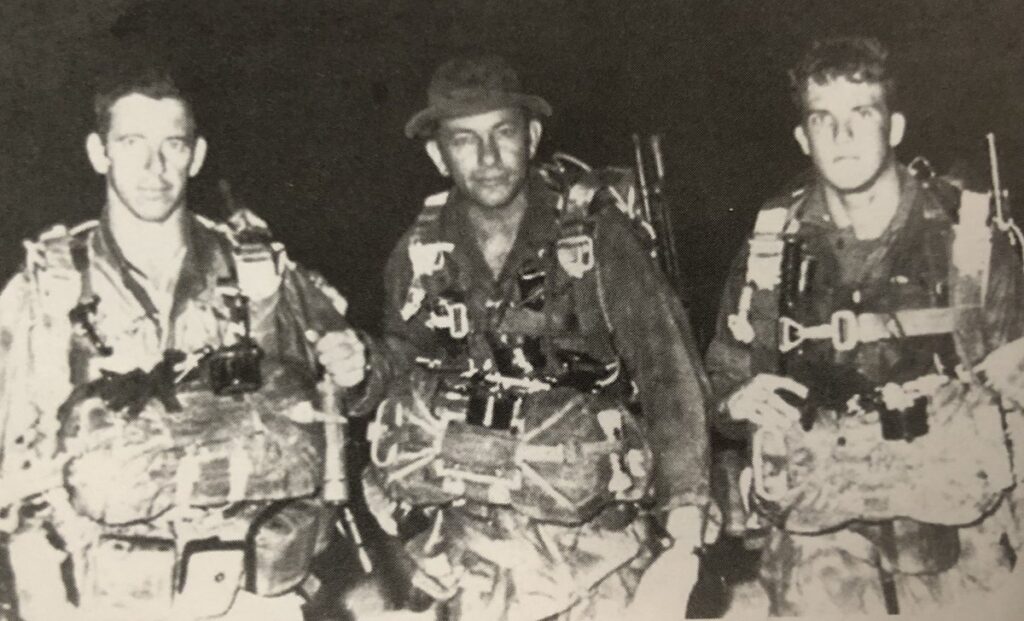
J. D. Bath, Billy Waugh & Jesse Campbell
Because of the bad weather, Strohlein rescue was delayed. When a Bright Light Team made it to the tree where Strohlein’s landed in, the team found Strohlein’s weapon and evidence of a fire fight, however, they were not able to locate any other trace of Sgt. Strohlein’s whereabouts. He remains MIA. The remaining team members were successfully extracted.
SGT Madson Strohlein

SOG’s Fourth HALO jump had no injuries and the team assembled quickly to conduct a recon mission. Captain James G. Storter led the team. The rest of the team was SFC Newman Ruff, SSGT Millard Moye and SGT. Michael Bentley. Their target was the Plei Trap Valley, northwest of Pleiku. The NVA were building a new road from Cambodia. The team dropped in on September 22, 1971. Each of the members landed 30 yards from each other. The reconned the area for four days. The NVA never knew they were there.

The fifth and final SOG Halo mission was on October 11, 1971. RT Washington led by 1-0 SSG Robert L. McNier, other members were 1-1 SSGT Howard Sugar, SFC Dick Gross, Charles Behler and five Montagnards – Not, Biu, Hluih, Hmoi and Kai. This was the largest SOG Halo team to date. The objective was to land 25 mikes southwest of Pleiku in the La Drang Valley. The team jumped at 13,000 feet and were scattered during the decent. Before dawn, NVA patrols were searching for RT Washington. Bad weather precluded fighter or gunships to support the team on the ground. Mark Gentry fought a one man battle against a NVA Squad. After taking cover in a bomb crater, USAF Covey FAC, Lt. Paul Curs, used his small plane to simulate an air strike, firing rockets and making low passes to keep the NVA off of RT Washington. Two hours later the overcast broke and RT Washington were extracted.
Howard Sugar
